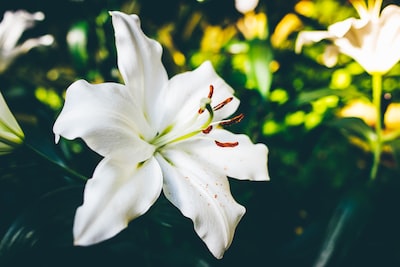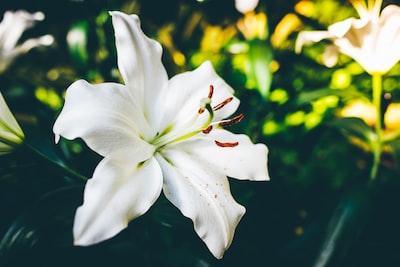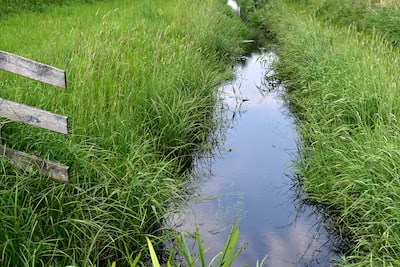Graceful, delicate and fragrant – lilies are one of the most beloved flowers of all time, adorning gardens, weddings, and funerals alike. Whether you have lilies in your garden or as cut flowers, it’s essential to take good care of them if you want their beauty to last.
But with so many different lily species, it can be hard to figure out a Lily care routine that works for you. Should you water them every day or every other day? Should you fertilize them regularly or every season? And what about pruning, should you cut them all the way back or only trim the dead leaves? These questions and more plague many lily enthusiasts, but worry not! With a few tips, you can easily create a Lily care routine that will ensure your lilies thrive.
Ah, the lovely Lily plant. Such delicate petals and strong, stately stems.
But did you know that your Lily care routine could be killing your beautiful flowers? That’s right. Despite your best intentions, you could be inadvertently sabotaging your Lily’s chances for a long and healthy life.
It’s a perplexing issue that has confounded even the most seasoned gardening experts. Some say it’s all about the soil, while others insist that it’s all about the watering schedule.
But one thing is clear: many people are doing things wrong, and their Lilies are suffering because of it.Perhaps you’ve been too busy to properly tend to your Lilies, or maybe you thought you were doing everything right, but you were actually misinformed.
Regardless of the reason, if your Lilies are wilting or turning brown prematurely, it’s time to take a closer look at your Lily plant care routine. This may mean adjusting the pH level of your soil, investing in better quality fertilizer, or simply changing the timing and frequency of your watering sessions.
But where do you even begin when it comes to Lily care? There are so many conflicting opinions out there, it’s enough to make your head spin. Some sources insist that Lilies need to be watered every day, while others say once a week is plenty.
And then there are those who swear by a particular brand of fertilizer, while others argue that homemade compost is the only way to go.One thing is for sure, though.
You need to stay vigilant when it comes to your Lily’s health. Don’t assume that just because you’ve been doing things a certain way for years that it’s the best way.
Always be open to new information, and be willing to experiment with different approaches. After all, the health of your Lilies depends on it.
So, whether you’re a seasoned gardener or a newbie just starting out, don’t overlook the importance of Lily plant care. Take the time to research and learn all you can about this majestic and multifaceted flower.
With a little effort and attention, your Lilies can thrive and bring joy and beauty to your home for years to come.
Table of Contents
1. Introduction
Growing a beautiful garden requires attention, patience, and hard work. However, with lilies, all those efforts can backfire, causing harm instead of thriving plants.
Lilies are delicate and require proper care to prevent stunted growth, lack of blooming, and even premature death. In this article, we’ll discuss the common mistakes that gardeners make, such as over-fertilizing, under-watering, and planting them in the wrong soil.
We’ll also provide expert tips on how to care for your lilies so they can thrive and achieve their full potential. Whether you’re experienced or a novice gardener, avoiding mistakes when caring for lilies is crucial for enjoying their beauty and fragrance for years to come.
Keep reading to improve your lily care routine.
2. Overwatering
Lily care depends on multiple factors. One of the most important is avoiding overwatering.
Although lilies come in different colors, they all require less water than you might think. They are native to dry, mountainous areas and have adapted to survive with minimal moisture.
Unfortunately, many gardeners mistakenly believe that constant watering is vital for the plants. In truth, overwatering causes lilies to suffocate and drown.
It deprives them of the oxygen they need and makes their roots vulnerable to rot. Excess water also depletes the soil of nutrients, leading to various diseases.
If you want to keep your lilies healthy, you should check the soil moisture regularly. Only water the plant when the top layer of soil feels damp to the touch.
Make sure the pot has good drainage and avoid leaving standing water around the plant. By following these rules, you can nurture flourishing lilies that will brighten up your garden for years to come.
3. Poor Drainage
For any gardener, seeing plants thrive is a great joy. However, overwatering can be counterproductive, resulting in droopy stems and wilting petals.
Experts say this may be due to poor drainage. Though watering is important for plant care, it’s not only about quantity but quality.
Inadequate drainage in soil can lead to root rot and other issues. Overwatering is worse than underwatering, as the latter lets roots dry out between waterings.
How can you tell poor drainage has affected your lilies? Look for yellowing or drooping leaves, and a stinky soil. To take action, replant lilies elsewhere or improve soil with organic material.
Always consider if your lilies really need water before you water them. By paying attention to your plants, they will flourish and thrive, and your lilies will impress everyone.
4. Lack of Sunlight
Proper care for lilies includes an important factor: sunlight. Sunlight is vital for the growth and development of lilies.
These delicate flowers require direct sunlight to bloom properly, and it helps them create vital food. Gardeners may assume that keeping lilies in the shade will help prevent burning or drying out, but it’s quite the opposite.
Lilies need time to adjust to the amount of sunlight they receive, so it’s best to gradually expose them to more sunlight. With proper care, lilies will thrive in the sunlight and bring joy to your garden.
5. Fertilizing Mistakes
The Lily is a magnificent plant with beautiful petals and vital leaves. However, over-fertilization and using the wrong type of fertilizer can throw off the delicate balance of nitrogen, phosphorus, and potassium needed for optimal growth and flowering and can lead to stunted growth or even death.
Proper fertilization requires frequent checking and adjustment. Pruning is also critical for Lily care.
Check out our Lily pruning tips to ensure your plant thrives for years to come.
6. Incorrect Soil pH
Cultivating beautiful flowers requires attention to important details beyond surface level. Selecting the right flower, location, and watering schedule are all crucial factors to consider for the health and longevity of your blooms.
However, one aspect that often goes unnoticed is the pH level of the soil. Neglecting soil acidity can have a major impact on lilies, leading to stunted growth, yellow leaves, and premature death.
Luckily, preventing this damage is easy once identified by proactive care and maintenance.
7. Neglecting Pests
To achieve perfect lily blooms, pest control is essential. Lilies are susceptible to infestations that can damage the plant and lead to flower death.
Neglecting pest control can undo the efforts of watering, fertilizing, and pruning. Prevention is key and includes regular inspection, proper sanitation, and integrated pest management techniques.
Neglecting pests can turn a garden from paradise to a graveyard. To have beautiful blooms, prioritize pest control.
8. Improper Pruning Techniques
Flower lovers know the joy of nurturing and watching their plants flourish. However, improper pruning can harm your flowers.
In an article titled ”Why Your Lily Care Routine Could be Killing Your Flowers,” experts warn that mistakes such as using dull clippers, cutting buds prematurely, and trimming leaves too severely can impede growth and invite the lily beetle. Lily care requires a different approach than other flowers, and even long-standing rules like deadhead snipping may not apply.
To ensure healthy blooms, use the right tools and techniques and prune with care. Those who invest in their floral assets will have a beautiful lily season.
9. Conclusion
Caring for lilies may seem complex, but being too meticulous can actually harm them. The care process depends on various factors, such as soil type, location, and climate, so a one-size-fits-all approach is not effective.
To create an adaptive care routine, observe your lilies’ response and adjust accordingly. This flexibility will allow your flowers to thrive.
Don’t let a care routine become a burden – care for your lilies with intention and flexibility for healthy, vibrant blooms.
Finishing Up
As we conclude this exploration of lily care, it’s clear that these beautiful flowers require more attention than one might expect. From the choice of soil to the timing of planting, every detail matters.
And once the lilies are in full bloom, there’s still work to be done – the delicate petals must be protected from pests and weather, while the stems need support and careful watering. But all of this effort is repaid in spades when we see the stunning results of our hard work, and witness the way these flowers can transform a room or garden.
So let’s not shy away from the challenges of lily care, but embrace them as opportunities to learn, grow, and create something truly special. Let’s take on this challenge with passion, with dedication, and with the knowledge that our efforts are not only for ourselves, but for the enjoyment and admiration of all those around us.
Let us remember that taking care of lilies is not only an act of gardening, but an act of love, and one that rewards us in ways we can scarcely imagine. So with this in mind, let’s go forth and tend to our lilies with all the care and attention they deserve.




